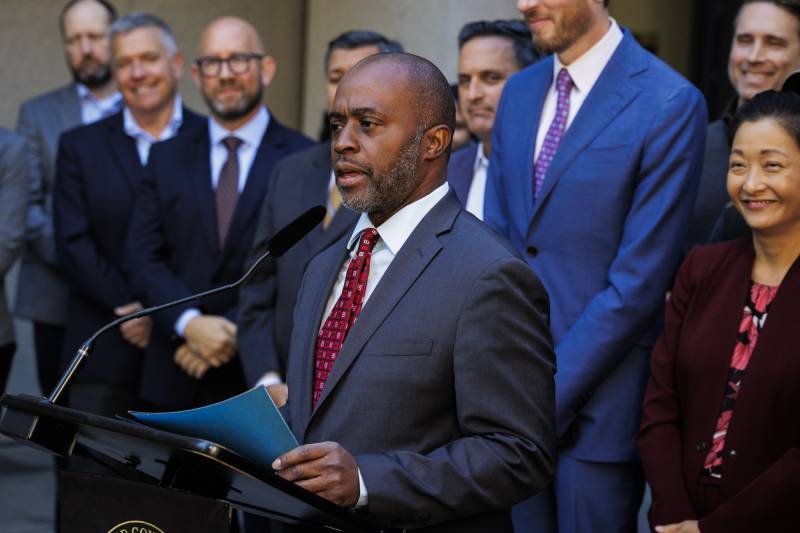“This is not a partisan issue,” he said. “This is an issue of continuing to assure that students have access to the resources that they are entitled to under the law. And we will continue to do that.”
If Trump follows through on his vow to abolish the Department of Education, California could face a nearly $8 billion loss in funding for public education. If that happens, Thurmond said he would call on the state Legislature and Gov. Gavin Newsom’s office to backfill that funding.
“We’ll see where things end up, but we are already prepared to take legislative action and steps to protect funding in education,” Thurmond said.
He said he’s already heard from educators worried about the threat to their most vulnerable students, including those from immigrant families, as well as those enrolled in special education programs.
“They said, ‘If the U.S. Department of Education is abolished, does that mean that we’re getting rid of special education services for California students?’ And let me be clear: We will not be ever getting rid of special education services in the great state of California,” he said.
During Trump’s first term, he rolled back many Obama-era protections for marginalized students, including students of color and transgender students. Then-Education Secretary Betsy DeVos rescinded Obama’s Title IX guidance for transgender students, which allowed them to use restrooms and locker rooms that matched their gender identity. Trump’s administration also tossed Obama-era civil rights efforts in schools, including a policy aimed at preventing schools from disproportionately disciplining students of color.
Not every education-related rollback was successful. For instance, Trump tried to cut funding to the Department of Education by 13% and eliminate popular programs like after-school programs and teacher training, but a Republican-controlled Congress rejected those efforts.
Still, California educators are worried about the damage a second Trump presidency could do to their schools and students.
“We want to make sure we have a safe space for every student, regardless of their immigration status,” said Jeff Freitas, president of the California Federation of Teachers and a high school math teacher. “We want to make sure this is a safe space for every LGBTQ+ student.”
A decrease in funding would be especially troublesome in the Bay Area, where local school districts are already under financial strain.
San Francisco Unified School District is currently facing a massive budget deficit, which has forced it to consider closing and merging some schools, causing outcry among parents, teachers and staff.
Oakland’s school district is also grappling with a big budget deficit of $174 million. On Friday, the district announced it plans to merge 10 campuses to reduce costs.

